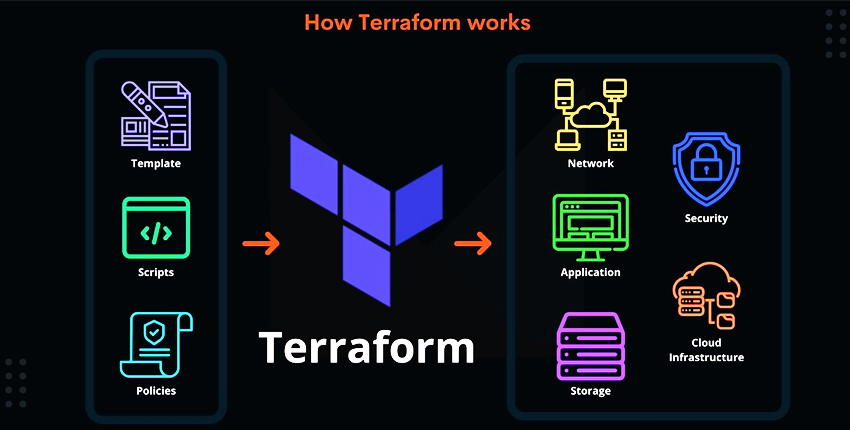
Terraform is a powerful infrastructure-as-code (IaC) tool that has revolutionized the way organizations manage and provision their infrastructure. We will explore what Terraform is and why it's a critical tool for modern IT operations and cloud management.
What is Terraform?
Terraform is an open-source infrastructure automation and provisioning tool that allows you to define, configure, and manage infrastructure resources using code.
Key Features and Functions:
-
Infrastructure as Code (IaC): Terraform enables you to define your infrastructure, including servers, networks, and storage, as code in a declarative language. This code, written in HashiCorp Configuration Language (HCL), describes your desired infrastructure state.
-
Multi-Cloud and Multi-Provider: Terraform supports multiple cloud providers (e.g., AWS, Azure, Google Cloud) and various infrastructure platforms. This flexibility allows you to manage resources across different environments using a single tool.
-
Version Control: Infrastructure code can be versioned and managed with tools like Git. This makes it easy to track changes, collaborate with team members, and roll back to previous configurations when needed.
-
Resource Dependency Management: Terraform automatically manages dependencies between resources, ensuring that resources are provisioned in the correct order. This simplifies complex infrastructure setups.
-
Plan and Apply: Terraform offers a "plan" feature that allows you to preview changes before applying them. This helps prevent unexpected modifications and minimizes the risk of downtime.
Why Use Terraform?
-
Infrastructure Automation: Terraform automates the provisioning and management of infrastructure, reducing manual and error-prone tasks. It allows you to treat your infrastructure as code, making it easier to maintain and evolve.
-
Consistency: By defining your infrastructure as code, you ensure consistency across your environments. This consistency minimizes configuration drift and reduces the risk of misconfigurations.
-
Multi-Cloud and Multi-Provider Support: Terraform's versatility enables you to work with various cloud providers and platforms. This means you can build and manage infrastructure that spans different cloud environments, increasing flexibility and avoiding vendor lock-in.
-
Collaboration and Version Control: With Terraform, infrastructure code can be stored, shared, and managed using version control systems like Git. This encourages collaboration among team members, streamlines code reviews, and allows you to track changes over time.
-
Scalability: Terraform is highly scalable, making it suitable for projects of all sizes. Whether you are managing a single server or a complex, multi-tier application, Terraform can adapt to your needs.
-
Cost-Efficiency: Using Terraform helps optimize resource utilization, ensuring that you only provision the infrastructure you need. This can lead to cost savings by avoiding over-provisioning.
Conclusion: Terraform is a game-changer in the world of infrastructure management. Its ability to define and manage infrastructure as code brings automation, consistency, and flexibility to IT operations. By leveraging Terraform, organizations can efficiently deploy and manage their infrastructure, reduce human error, and adapt to the ever-evolving world of cloud and technology. If you're looking to streamline your infrastructure management, Terraform is a tool you can't afford to ignore.
